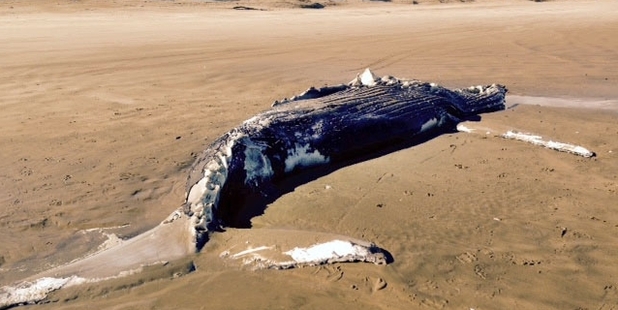
The 8.8m juvenile whale came ashore last Thursday near the Waipapakauri ramp entry to the Far North beach.
Local resident Peter Kitchen said the high tides had pushed the whale up the beach and local iwi members had intended to carry out a prayer and work on extracting the bones on Sunday morning.
However, the high tides had washed the whale another 8km north by Sunday morning.
Mr Kitchen said locals had worked in with Department of Conservation (DoC) and were given the go-ahead to remove the bones.
"We had the gear to do the job and worked on getting the bones out. We had a karakia and named it Waiora before burying the remains and bones," Mr Kitchen said.
A concern while extracting the bones was the toxic nature of the rotting mammal and those involved had been correctly kitted out in protective clothing.
"You have to be careful about the diseases that can come from these animals.
"We had a line in the sand around the whale where we were keeping people back."
Because the humpback whale is a baleen feeder there was no real jaw bone or teeth, just a top plate. The species can grow to 19m long and weigh up to 48,000kg.
He said the ear bones were to be delivered to DoC and they would be sent away for analysis which would reveal how old the whale was and where it had been.
It is at least the fourth whale in nine months that has washed ashore on Ninety Mile Beach.
DoC Far North Far North partnership manager Ms Carolyn Smith said people making these marine discoveries on Northland beaches should report them immediately to the department's hot line.
"These animals usually have a number of diseases people can pick up. So we recommend they stay away and report these finds to us."
It was not unusual for whales to wash up on Ninety Mile Beach but the main season for whales migrating along Northland's coast, headed towards Antarctica for their summer feeding grounds, was between October and March.
Source: The Northern Advocate



Reader Comments
to our Newsletter